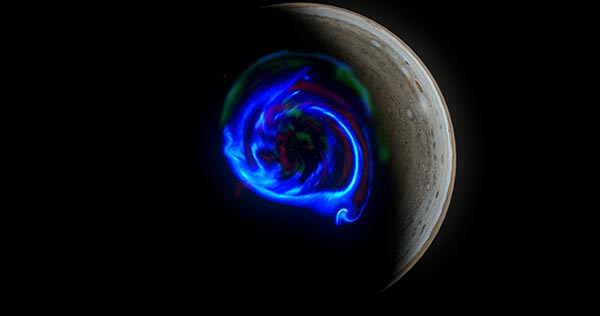Ancient oxygen boom transformed the deep ocean, sparking a fish evolution explosion
By isabelle // 2025-08-27
Tweet
Share
Copy

- A permanent oxygen surge 390 million years ago transformed lifeless ocean depths into thriving ecosystems and fueled the rise of jawed fish.
- Woody plants on land released extra oxygen into the atmosphere, which then enriched the oceans and enabled deep-sea colonization.
- Fossil and isotope evidence reveals two major oxygenation events, one temporary in the Cambrian period and one permanent in the Middle Devonian.
- This oxygen boost triggered an evolutionary explosion, leading to diverse marine life, including massive predatory fish like Dunkleosteus.
- Modern human activity now threatens ocean oxygen levels, risking the collapse of ecosystems that took millions of years to develop.
The missing link: Woody plants and oxygen
So where did all that oxygen come from? The answer lies not in the ocean, but on land. As woody plants—the building blocks of Earth's earliest forests—expanded across the land, they released additional oxygen into the atmosphere. This oxygen eventually made its way into the oceans, penetrating deeper waters and creating livable conditions for the first time. This wasn’t the first time deep-ocean oxygen levels spiked. The researchers found evidence of an earlier, temporary oxygenation event around 540 million years ago during the Cambrian period. But unlike that fleeting surge, the Middle Devonian oxygen rise was permanent, coinciding with a marine revolution at a time when jawed fish (gnathostomes) and other complex organisms began dominating deeper waters. To piece together this ancient puzzle, the team analyzed selenium isotopes in 97 sedimentary rock samples from five continents, dating back 252 to 541 million years. Selenium, a trace element in seawater, acts like a chemical fingerprint—its isotope ratios shift depending on oxygen levels. Where oxygen is abundant, selenium isotopes vary widely. But in low-oxygen zones, those ratios stay flat. By measuring these ratios, the researchers confirmed that two major oxygenation events occurred: one temporary (Cambrian) and one permanent (Middle Devonian). This oxygen influx didn’t just allow fish to survive in deeper waters; it supercharged their evolution. Fossil records from this period show a dramatic increase in fish diversity, including the emergence of large, predatory species like Dunkleosteus, a armored fish that could grow up to 33 feet long.Why this matters today
While the study focuses on ancient oceans, its implications ripple into the present. Today, human activity such as fertilizer runoff and industrial pollution is draining oxygen from the seas, creating dead zones where marine life cannot survive. The research demonstrates how essential oxygen is for marine animal survival. The delicate balance that took hundreds of millions of years to develop could be undone by human activity in a matter of decades. The findings also challenge long-held assumptions about how life thrives—and where. For centuries, scientists believed that photosynthesis (which requires sunlight) was the sole source of Earth’s oxygen. But recent discoveries, like "dark oxygen" produced by deep-sea polymetallic nodules, suggest that life may have originated in ways we’re only beginning to understand. As debates rage over deep-sea mining and its potential to destroy fragile ecosystems, this research serves as a reminder: The ocean’s depths are still a frontier, full of mysteries we’ve barely begun to unravel. Sources for this article include: Phys.org PopularMechanics.com Phys.orgTweet
Share
Copy
You Might Also Like
Chinese scientists develop rubber band that powers devices using body heat
By Cassie B. // Share
Cognitive breakthrough: Common food preservative shows promise in Alzheimer’s treatment
By Willow Tohi // Share
Jupiter’s alien auroras reveal never-before-seen plasma waves
By Cassie B. // Share
Recent News
Border Patrol expands surveillance network: Secretive program monitors millions of U.S. drivers
By bellecarter // Share
Corruption in Zelensky's government: A new front in Ukraine War
By zoeysky // Share
Japan announces $135 billion stimulus package as Takaichi seeks to boost economy
By kevinhughes // Share











